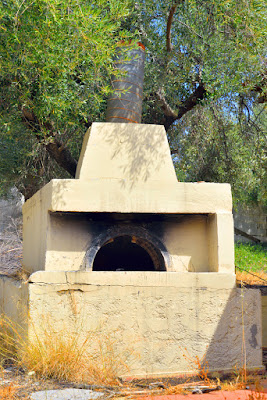The History of Commercial Refrigeration
While people have preserved food with ice for ages, the need for mechanical refrigeration became vital as people moved away from food sources and into big cities. Today's blog from Fast Fix LLC offers some information on the history of refrigeration units, particularly those used for commercial purposes. Without the ability to keep large amounts of food fresh through refrigeration and freezing, restaurants and other food-service businesses would have a difficult time to produce the quantity of food needed to succeed.
In the prehistoric era, ice was used to keep food cold. "Ice houses" were the first form of refrigeration as we know it today. Sometime around 1700 BC, these buildings that stored ice were invented. Ice and snow were loaded into the building, and then it was insulated with straw or sawdust. While this worked for them at the time, the process is a bit inconvenient.
Modern refrigeration systems weren't possible until 1756, when William Cullen demonstrated a rather impractical machine that created a small ice box by creating a partial vacuum over diethyl ether. Compression is the secret to the success of refrigerators. Liquid is turned into gas and draws energy from the space around it. Heat is then removed and the space becomes cooler. While the physics behind it sounds rather simple, creating a viable mechanical refrigerator was challenging.
His findings jump-started the race to create the first mechanical refrigerator.
In 1834, there was a patent issued for a vapor-compression refrigeration cycle that did not rely on chemical solutions or volatile liquids, but it was more of an ice machine. Several inventors worked on perfecting the "refrigerator" until the late 1800s. By 1914, nearly all U.S. meat packing plants were using vapor compression refrigerators with ammonia as a coolant, until those machines started leaking out toxic ammonia.
Modern refrigeration systems for commercial use have come a long way since those ice houses. Commercial refrigeration actually caught on quicker than home refrigeration. Breweries and meat packing operations were among the first businesses to adopt these new refrigeration systems, and the use of these new machines became widespread for commercial use. In 1928, Frigidaire introduced a new synthetic refrigerant known as chlorofluorocarbons (CFCs). Today we know this odorless coolant as "Freon." Its widespread adoption allowed commercial, and household, refrigeration to grow exponentially.
During the 1900s, the number of manufacturers increased significantly. With these advances in refrigeration, the commercial food-service industry expanded across America. Progress came to a halt in 1974 when it was hypothesized that CFCs release atoms that deplete the ozone layer. In 1986, the Montral Protocol began phasing out CFCs. Today's commercial refrigeration systems are environmentally friendly, energy efficient and highly durable.
If you own a restaurant or other food-service business that relies on commercial refrigeration for day-to-day operations, keep the number 573-544-0456 handy. We offer 24/7 emergency service for refrigeration and other commercial kitchen equipment repair needs in Missouri and Western Illinois.
Fast Fix LLC. Restaurant Services
9403 County Road 154
Auxvasse, MO 65231
Phone: 573-544-0456
St. Louis Customers: 636-FASTFIX
Website: www.FastFixLLC.com
"Like" us on Facebook
"Follow" us on Twitter
"Follow" us on LinkedIn
"Follow" us on Google
The History of Refrigeration
In the prehistoric era, ice was used to keep food cold. "Ice houses" were the first form of refrigeration as we know it today. Sometime around 1700 BC, these buildings that stored ice were invented. Ice and snow were loaded into the building, and then it was insulated with straw or sawdust. While this worked for them at the time, the process is a bit inconvenient.
Refrigeration Inventions
Modern refrigeration systems weren't possible until 1756, when William Cullen demonstrated a rather impractical machine that created a small ice box by creating a partial vacuum over diethyl ether. Compression is the secret to the success of refrigerators. Liquid is turned into gas and draws energy from the space around it. Heat is then removed and the space becomes cooler. While the physics behind it sounds rather simple, creating a viable mechanical refrigerator was challenging.
His findings jump-started the race to create the first mechanical refrigerator.
In 1834, there was a patent issued for a vapor-compression refrigeration cycle that did not rely on chemical solutions or volatile liquids, but it was more of an ice machine. Several inventors worked on perfecting the "refrigerator" until the late 1800s. By 1914, nearly all U.S. meat packing plants were using vapor compression refrigerators with ammonia as a coolant, until those machines started leaking out toxic ammonia.
Commercial Refrigeration
Modern refrigeration systems for commercial use have come a long way since those ice houses. Commercial refrigeration actually caught on quicker than home refrigeration. Breweries and meat packing operations were among the first businesses to adopt these new refrigeration systems, and the use of these new machines became widespread for commercial use. In 1928, Frigidaire introduced a new synthetic refrigerant known as chlorofluorocarbons (CFCs). Today we know this odorless coolant as "Freon." Its widespread adoption allowed commercial, and household, refrigeration to grow exponentially.
During the 1900s, the number of manufacturers increased significantly. With these advances in refrigeration, the commercial food-service industry expanded across America. Progress came to a halt in 1974 when it was hypothesized that CFCs release atoms that deplete the ozone layer. In 1986, the Montral Protocol began phasing out CFCs. Today's commercial refrigeration systems are environmentally friendly, energy efficient and highly durable.
If you own a restaurant or other food-service business that relies on commercial refrigeration for day-to-day operations, keep the number 573-544-0456 handy. We offer 24/7 emergency service for refrigeration and other commercial kitchen equipment repair needs in Missouri and Western Illinois.
Fast Fix LLC. Restaurant Equipment Service & Repair -
One Call Does It All!
Fast Fix LLC. Restaurant Services
9403 County Road 154
Auxvasse, MO 65231
Phone: 573-544-0456
St. Louis Customers: 636-FASTFIX
Website: www.FastFixLLC.com
"Like" us on Facebook
"Follow" us on Twitter
"Follow" us on LinkedIn
"Follow" us on Google







Comments
Post a Comment